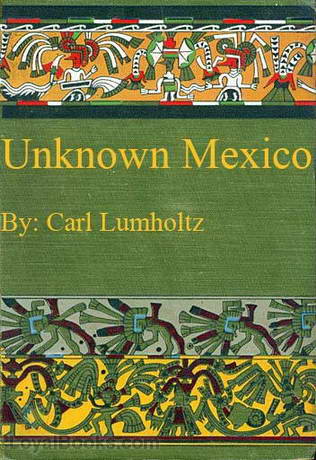Unknown Mexico, Volume II
Carl Sofus Lumholtz (23 April 1851 – 5 May 1922) was a Norwegian explorer and ethnographer, best known for his meticulous field research and ethnographic publications on Indigenous cultures of Australia and Mexico. Born in Fåberg, Norway, Lumholtz graduated in theology in 1876 from the Royal Frederick University, now the University of Oslo. Lumholtz travelled to Australia in 1880, where he spent ten months from 1882-1883 among the indigenous inhabitants in what was renamed North Queensland. He wrote a book about his experience, Among Cannibals: An Account of Four Years' Travels in Australia and of Camp Life with the Aborigines of Queensland, first published in 1889, which is regarded as the finest ethnographic research of the period for the northern Queensland Aborigines.
Lumholtz later travelled to Mexico with the Swedish botanist C. V. Hartman. He stayed for many years, conducting several expeditions from 1890 through to 1910 which were paid for by the American Museum of Natural History. His work, Unknown Mexico, was a 1902 two-volume set describing many of the indigenous peoples of northwestern Mexico, including the Wixarika, Na’ayeri, O’dam, Pima, and especially the Rarámuri, among whom he lived for more than a year. Lumholtz was one of the first to describe artifacts from the ancient shaft tomb and the P’urhepecha culture. He described archaeological sites, as well as the flora and fauna, of the northern Sierra Madre region, often called the Gran Chichimeca. He gave a series of three lectures on "The Characteristics of Cave Dwellers of the Sierra Madre" for the Lowell Institute's 1893-94 season. In 1905 Lumholtz was a founding member of the Explorers Club, an organization to promote exploration and scientific investigation in the field. He went on a brief expedition to India from 1914–1915, then to Borneo from 1915 to 1917, which was his last expedition.
Read Volume I of Unknown Mexico. We suggest reading this book in full screen mode.






